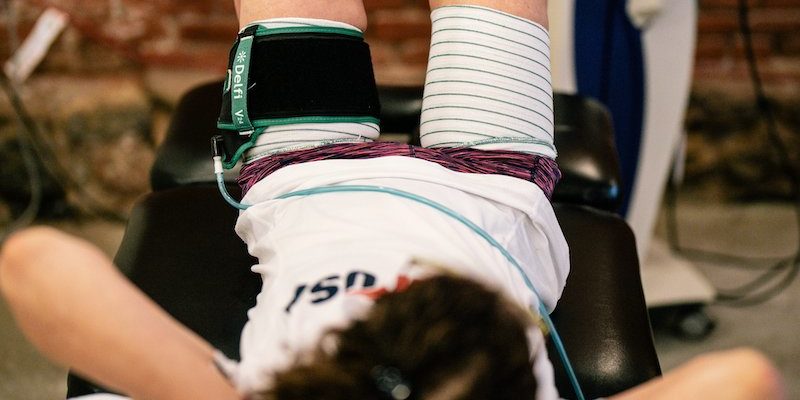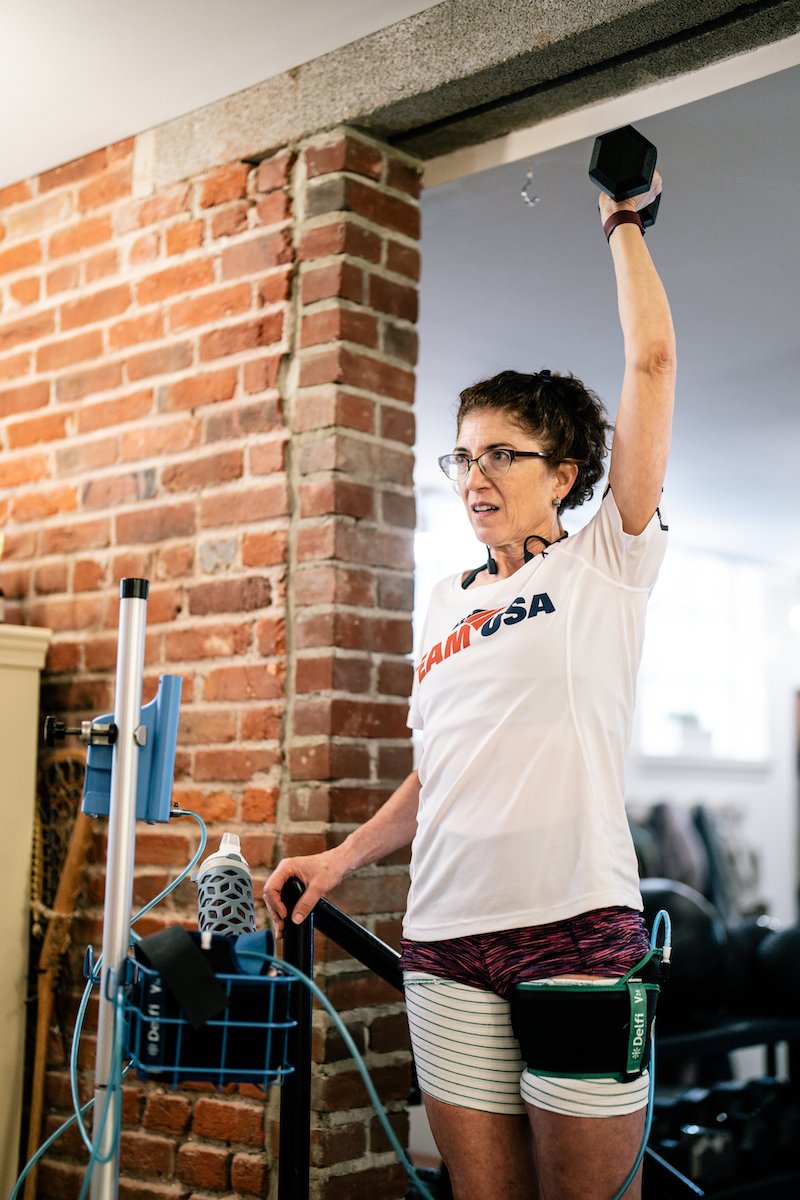Primal Physical Therapy first introduced personalized blood flow restriction therapy into our practice in 2019 after we started hearing countless success stories from our teaching colleagues across the country. Including the story of Alex Smith's remarkable recovery using blood flow restriction.
Physical Therapists, JJ Thomas and Eric Abramowitz are both trained by the leaders in Blood Flow Restriction research and development. Including Owens Recovery Science, whose founders were and continue to be at the forefront of the research surrounding the benefits of blood flow restriction and refining the most effective applications for it.

What is blood flow restriction therapy?
According to the American College of Sports Medicine, individuals looking to gain muscular strength and hypertrophy must exercise at loads equal or greater to 65% of a one-repetition maximum to produce noticeable results.
While nearly all injuries require strength gains to recover fully, people can often not load their joints sufficiently to achieve those strength gains due to limitations like pain, inflammation, and healing time restrictions (think post-operative or fractures).
BFR uses a surgical-grade tourniquet to partially impede blood flow to a limb, which essentially tricks the brain into thinking it is under heavy load, allowing us to achieve strength gains while training at much lower loads.
How does blood flow restriction therapy work?
When our muscles work hard under heavy load or in explosive activities, our bodies prioritize type 1, endurance-type muscles first. As a result, we only recruit type 2 strength and endurance muscle fibers after we've exhausted the type 1 fibers.
One of the ways our brain knows to kick in the type 2 fibers is to deplete the oxygen needed to feed the type 1 muscles. Type 2 muscles run on an anaerobic energy system, which doesn't rely as much on oxygen, so they get kicked in once the body sensors recognize a decrease in available oxygen to the muscles.
Using a surgical-grade tourniquet to partially and temporarily occlude oxygen to the training muscles allows us to prioritize the activation of type 2, fast-twitch muscle fibers without heavier loads. The restricted blood flow will enable us to get a jump on strength gains in our patients without exposing them to loads that might otherwise impede healing.
In addition to being able to recruit and activate more muscles, the use of BFR triggers a physiologic healing response that not only reduces inflammation in tendons but also facilitates muscle growth and healing in muscles, bones, and ligaments.
What's the result? People get better and stronger faster.

Blood Flow Restriction Therapy Equipment
We use the Delfi Blood Flow Restriction system, one of the only available units on the market with a built-in doppler system. The built-in Doppler ensures we are occluding the limb at the safe and recommended proportions to optimize results.
BFR Training Use Cases
We often use Blood Flow Restriction Therapy post-surgically to prevent muscle atrophy that often occurs due to immobilization post-surgically. With this option, we can safely train muscles that are often prone to atrophy post-operatively in a way that protects the healing tissues.
Tendonitis/tendinopathy
It is well documented that inflamed tendons need a load to heal. However, often patients cannot tolerate the loads required to achieve results due to the inflammatory nature of their injury. BFR allows us to get the benefits of increased load to a tendon without aggravating the already inflamed tendon.
We often use BFR with our competitive athletes to train VO2 max and keep their conditioning levels high when their injury limits them from performing their normal training volumes.
Bone healing
The use of light exercise and BFR while recovering from a fracture improves the strength needed for return to activity once the fracture is healed and promotes healing of the fracture itself.
READY TO GET STARTED?
Blood Flow Restriction Training Success Story
A 16 yr old competitive wrestler with a UCL tear in his Right elbow was able to return to competition four weeks post-injury with two weeks of 4x/week training with blood flow restriction rehabilitation and Physical Therapy.
This is a classic example of how tissue healing time would typically limit our ability to strengthen an area in a way that is critical to supporting a return to sport.
Ligaments take 4-6 minimum to heal, assuming the ligament is being protected and not exposed to continued stress throughout the healing time. The elbow needs help from the Wrist Flexors (which follow the UCL's anatomical path) to support the joint with a torn UCL.
To strengthen the wrist flexors traditionally, we would generally expose the ligament to unwanted stress and inflammation that would impede healing.
With this athlete, we were able to get a jump on training the wrist flexors and get him back to competition faster by using blood flow restricted exercise to train the wrist flexors without putting unwanted stress on the ligament/joint.